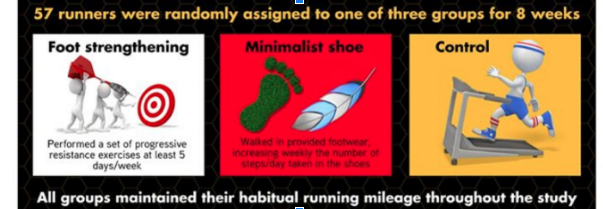Barefoot Training
By Ed Murray, Podiatrist in Sydney
As a runner and Podiatrist, barefoot training is something I get asked about A LOT. Partly because I wear barefoot shoes, but I also think partly due to a growing interest in ‘holistic’, ‘natural’, ‘self-healing’ (enough buzz words) treatments that we see in all aspects of health. We see it in diet, in wellbeing (whatever that is exactly) and in the treatment of common chronic conditions. Turmeric for inflammation. Fish-oil for arthritis. Tea tree oil for everything. Paleo for whatever paleo is meant to do.
What is barefoot training / walking / running?
Barefoot, for me, does not have to be a way of life; some fundamental, non-negotiable pillar of optimal foot function. Which is sometimes how it gets portrayed.
At its core, barefoot training is a way to make your feet stronger. That’s it. We can delve deeper into foot mechanics, tissue responses, grounding etc etc; but really, if you want stronger feet, barefoot training can help. And one of the great things about barefoot training, is you don’t really have to do anything. Just wearing barefoot shoes IS the training. And you don’t need to use them all day everyday, and you don’t have to run in them. Just like any training, you’ll get out what you put in.
What are the benefits of Barefoot training?
Feedback: Barefoot training is THE BEST way to understand how your feet are working. Where the pressure goes, which muscles are working, which are struggling, which joints are happy, which aren’t. This constant feedback gives far greater control over your mechanics than wearing traditional footwear.
Strength: Simply wearing barefoot shoes forces your body to work that bit harder and that bit smarter. A recent study (Ridge ST et al, 2019.) compared three groups:
The Results:
Foot strengthening group + Barefoot shoe group: Significant increase in muscle size and strength at 8 weeks
Control = nothing.
(Thanks @ylmsportsscience)
Interested? Click to start Barefoot training in Sydney
Barefoot Training: What to expect
Expect to feel strange, to walk funny, to find it hard work and to feel niggly afterwards. But start small. Really small. An hour here, an hour there, and over the course of a few weeks, your feet will work it out and you’ll start to appreciate the benefits. Most of us have been wearing traditional shoes our whole lives, so barefoot training is quite strange for our bodies. We should have a training plan and give our bodies time to adjust. I strongly believe in foot strengthening exercises to help the transition in addition to a very gradual build up. Click here to see some awesome foot strengthening exercises that you can do at home.
What are good barefoot shoes?
I like Vivo. I find the shape comfortable and they look good (I wear them to work). For me, it’s that simple. Other brands that I’ve seen and heard good things about include Xero and Merrell. I’m not so hot on the ‘toe shoes’...just never found them comfortable, but you do you. I’ve also seen Feelgrounds and keen to check them out.
Can everyone train barefoot?
Yes and no.
The benefit of understanding the way your foot works, coupled with the ability to train muscles and joints can help almost anyone. However, certain structural problems, diseases or chronic conditions make training or walking barefoot very difficult and possibly dangerous.
Certain injuries often require offloading and load redistribution that barefoot training will not provide, and may even hinder.
At certain stages of a training regime (think of people training for marathons) or rehabilitation, barefoot training may not be the most appropriate exposure for your feet.
People with reduced sensation or motor impairment should clearly be very careful.
I’m interested in barefoot training
I strongly advise that you consult a trained health professional before going down the barefoot path to optimise the training benefits and ensure your own safety. Click the link below to begin your journey to strong, powerful, healthy feet.

